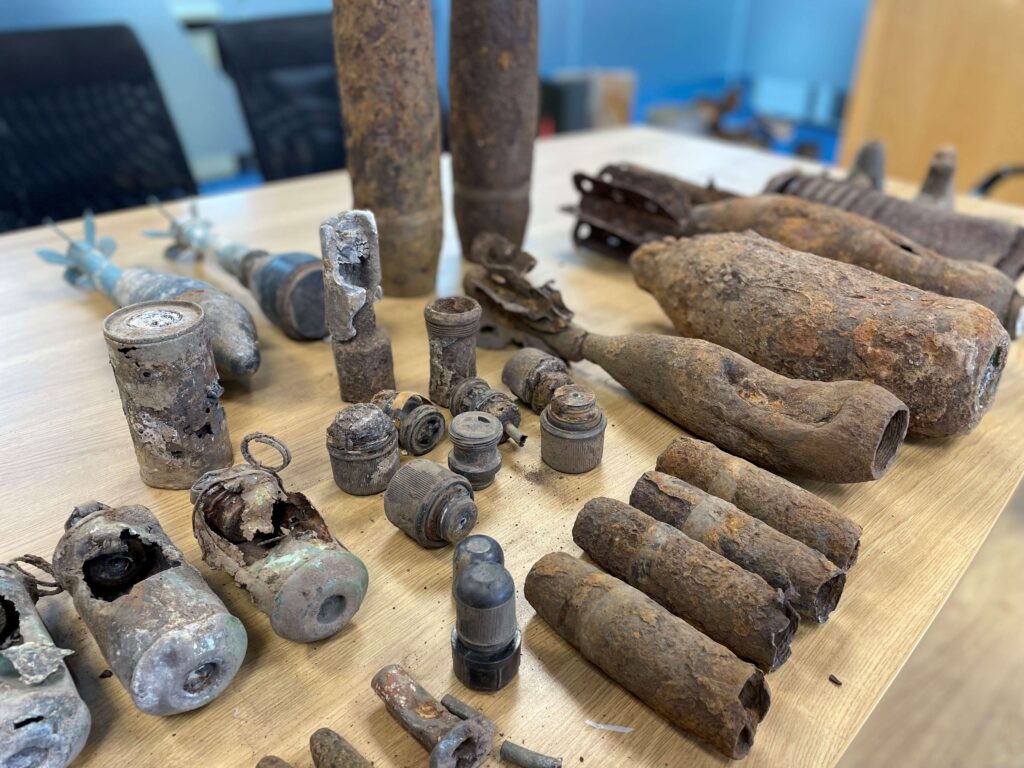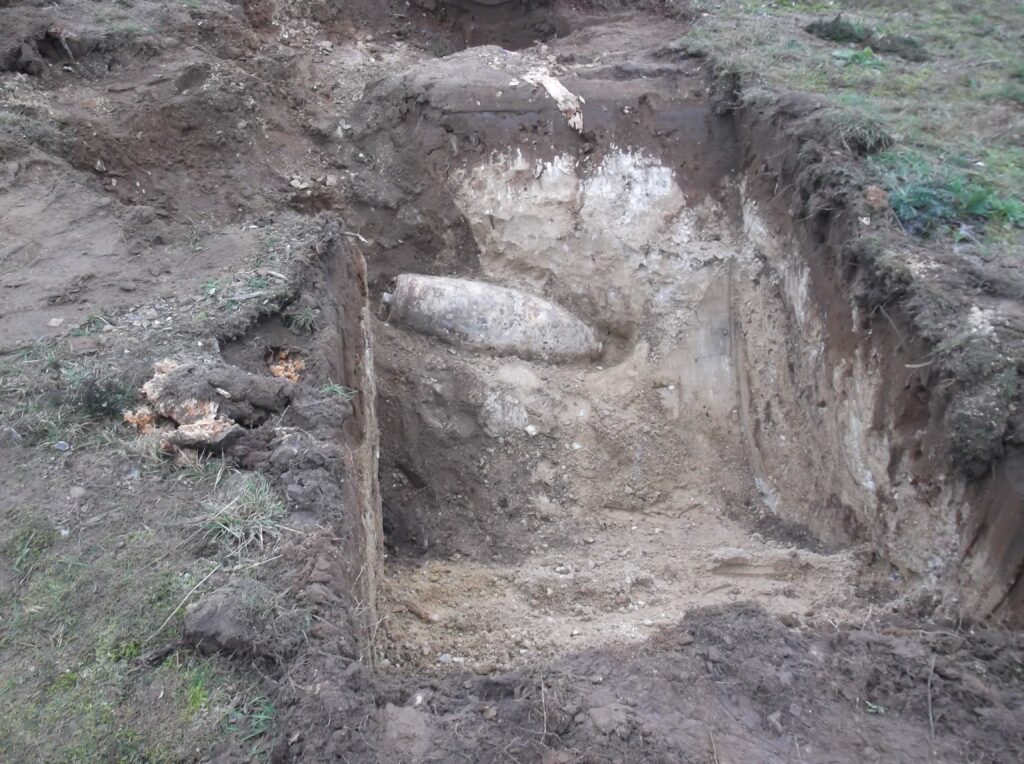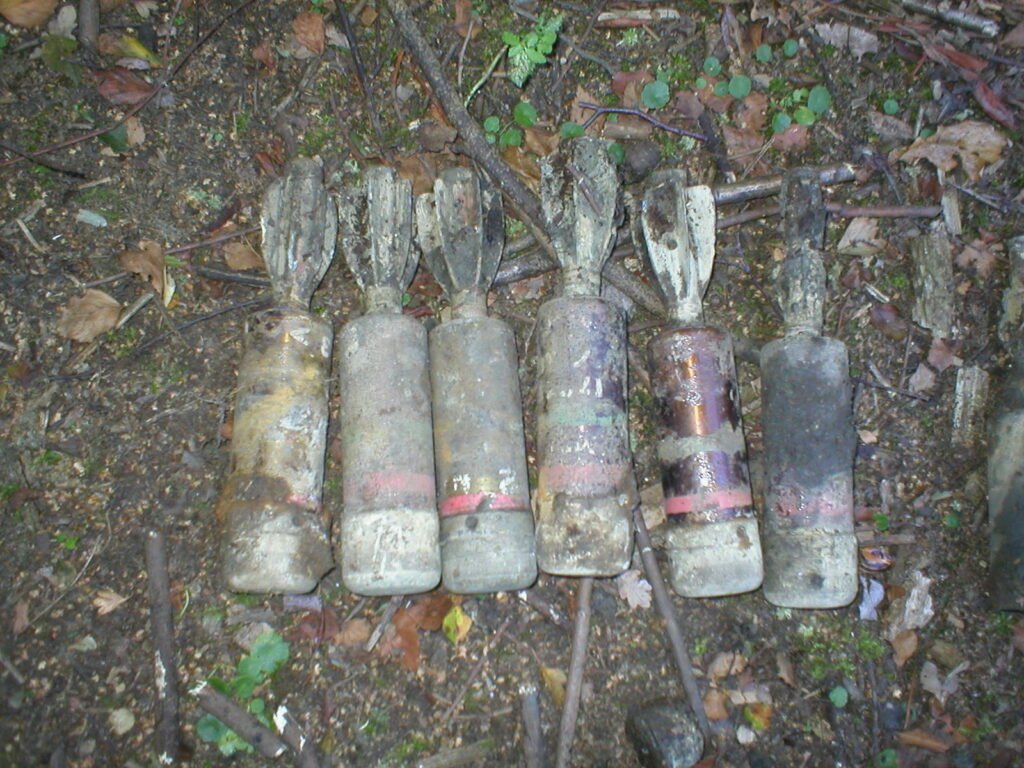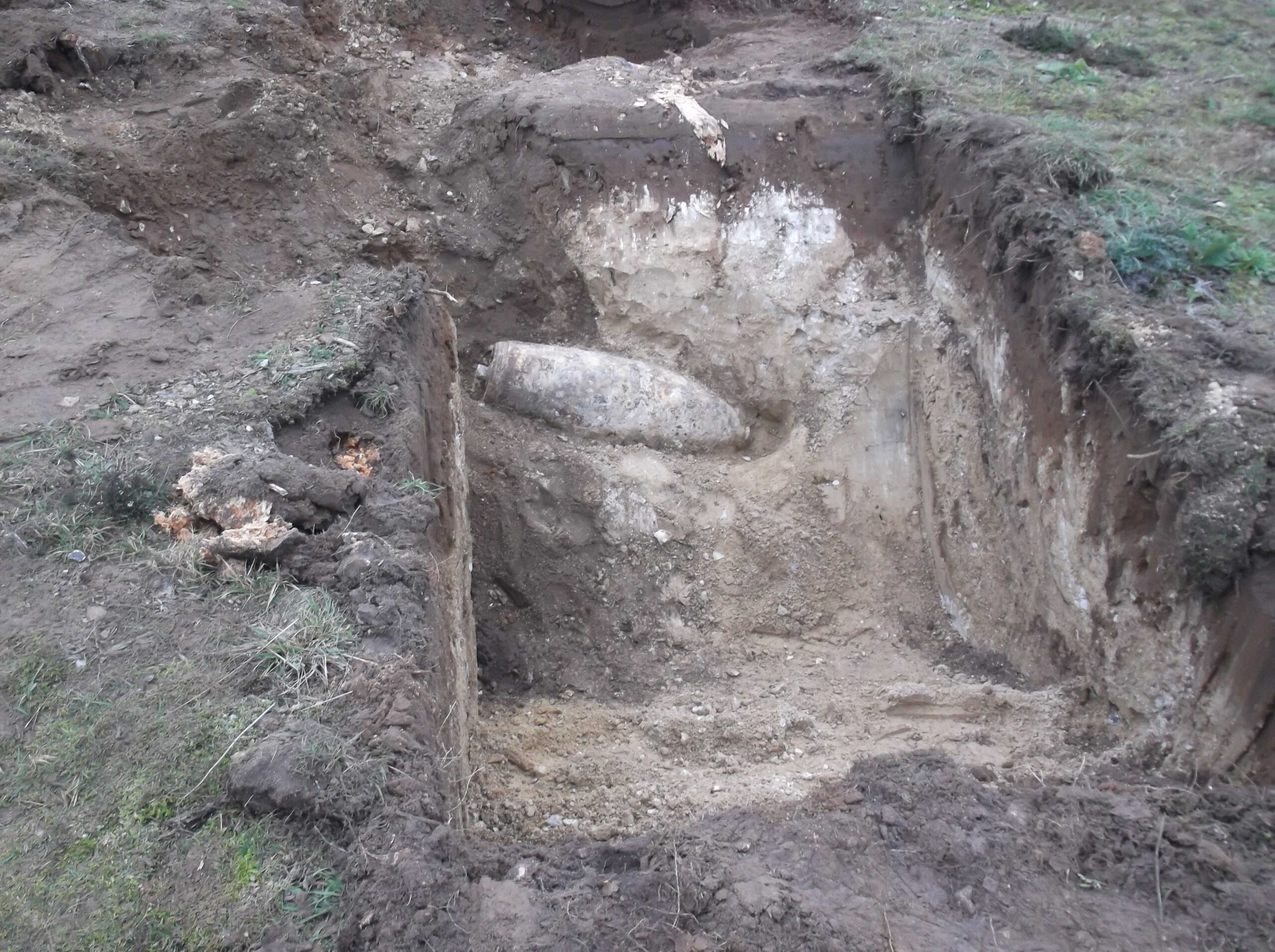The teams at GRM are trained to ‘expect the unexpected’ when it comes to planning site investigations, and one area that requires particular attention is unexploded ordnance (often referred to as UXO).
The term UXO typically refers to dropped enemy ordnance which failed to detonate upon impact with the ground, or from allied defence ordnance (including items fired at aircraft, or items dropped, burned, buried and discarded at the end of the war, as well as munitions used in training exercises). UXO can still pose a risk of detonation, often many decades after they were used or discarded.
Military sites, and the area surrounding them, represent a higher UXO risk as they were both a target and a source of ordnance. Even if no historic bombing is recorded, ordnance could have been buried in the ground following military drills, practice or as a form of disposal following the war.
In addition, the Home Guard often made their own weapons including sticky bombs and self-igniting phosphorus grenades (SIP grenades). There were an estimated 6 million SIP grenades produced by the Home Guard during WWII, with discarded or buried examples still being uncovered (beware smoking milk bottles!).
Not only do UXO present a significant health and safety risk at both site investigation and development stages, but they can also cause significant delays and additional costs where unexpectedly encountered later in the construction programme.
In line with industry guidance including CIRIA C681 “Unexploded Ordnance (UXO) Risk – A Guide for the Construction Industry”, Preliminary Risk Assessments are undertaken and, where required, Detailed Risk Assessments to review the potential for UXO to be present.
Historical mapping of the site can help to determine potentially important enemy targets such as factories, industrial sites, airfields, supply lines and heavily populated areas, and evidence of local bomb damage. Ground conditions and geology heavily influence the condition and depth that UXO can be encountered. This can be just below the surface down to depths of several metres (UXO has even been recovered at depths of more than 12m).
GRM work with UXO specialists for on-site support including toolbox talks and magnetometer surveys for detection and clearance in boreholes and where piled foundations are planned. 1st Line Defence is one of our specialist partners, and Mark Watson recently came to our head office in Burton to provide additional awareness training and guidance. He also brought in some examples of UXO that may be encountered by our teams, as well as giving us some case studies of UXO finds in the UK (with some photos included of their more recent discoveries).
If you have any development or construction projects, then please get in touch to find out how we can help save both time and costs, mitigating health and safety concerns and avoiding potentially costly delays to the construction programme by considering UXO risk at an early stage. Please use your main point of contact at GRM or for new enquiries email richard.upton@grm-uk.com or call 01283 551249.





